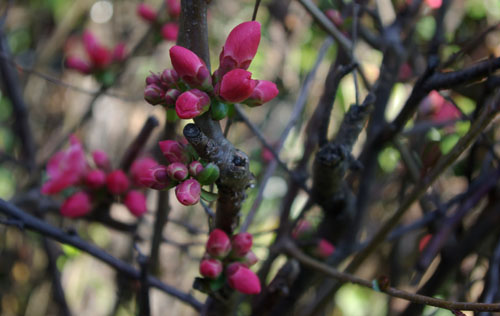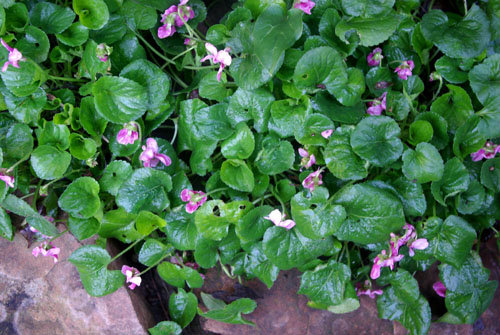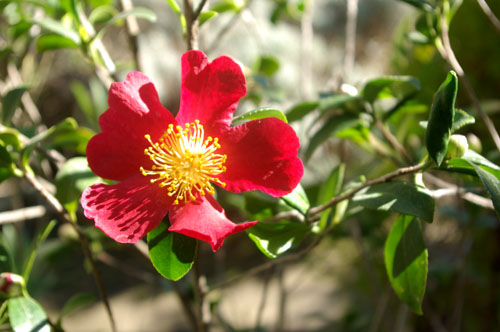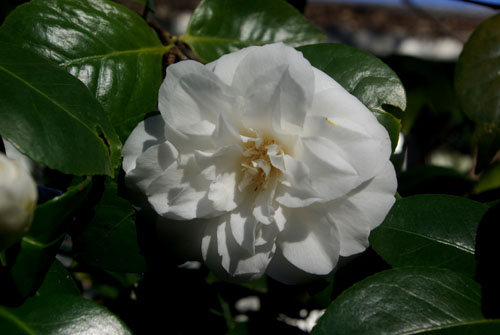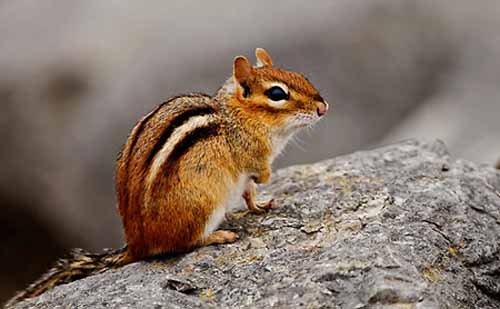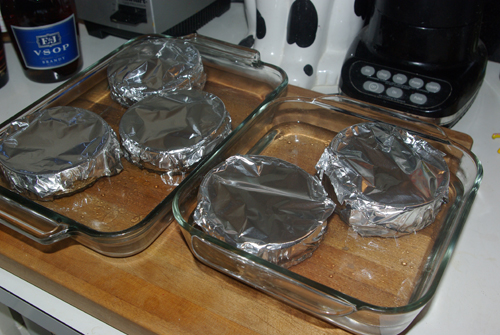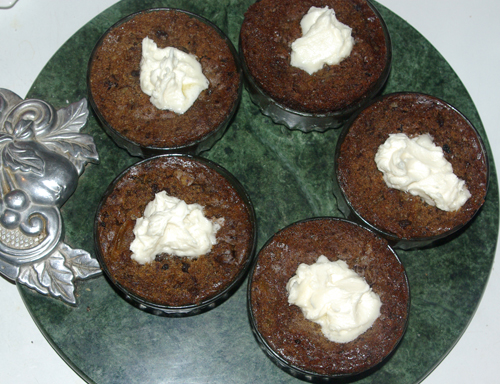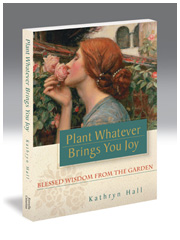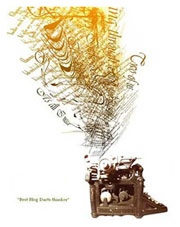Last week my old friend Dan Millman asked me, “So, are you busy working in your garden?” Silence. Thinking, uh, not really. “Umm.” “Oh, winter?” Something like that.
These are not the fun times in the garden. They really are not. At best I’m using the blower to move leaves along and cutting back now decrepit stems of oregano I left long past their prime as the honeybees seemed to appreciate the last of the blossoms, and I wasn’t going to interfere in that. I might snatch at a naughty weed trying to make its way into my tierra, no thank you. But I’m not planting anything yet. And I rather thought there wasn’t much to see. Honestly? I’m largely just avoiding mud. Really.
But then I thought about it again. Only days later I took my camera out, intent on finding buds at very least, and have consequently opened up my vision way past what I anticipated. For this is what I found. Open your eyes.
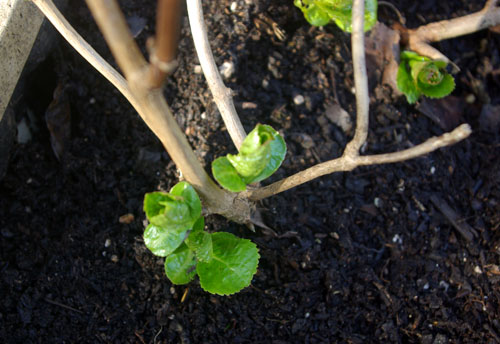
hydrangea
Perhaps it really does take a gardener to be excited about the new growth spotted on the hydrangea. But it worked for me. I know what will follow. Gorgeous pompoms of white and pink and lavenders. Even the thought of it makes me smile.
A bit surprised to see the California poppy so far along. It won’t be long before their orange splendor is lighting up the back garden. I’m inspired to put more seeds in the ground and expand their territory.
Oh, I knew the violets were in full bloom. I’ve taken two tiny bouquets to beloved friend Conny, who loves them dearly. Every year they enter new areas of the garden and I don’t discourage them at all. The post I did on wild violets is one of the most visited on this blog. People love them, and usually have associations with their past. This must be true of Conny, as well, who is from Germany, as she starts exclaiming endearing things in German when I present her with her gift.
I bought the wild violets a present. Pink violets. A hybrid, no doubt. And they compliment the wild ones beautifully.
Soon it will be full out camellia season, and the first ones to blossom are out.
This is actually a Christmas camellia, but winter has been such an unpredictable force this year that this plant only recently began to blossom. I love it. I love the cheer it brings.
I was surprised to see the white camellia had opened. I have to actually go on to my neighbor’s property to see the first ones that open, as they are on the fence line, rather hidden and respond, like most flowers, to the sun’s light and heat. I find them very elegant.
As I’m walking about poking here and there for the earliest signs of the changing of the season I’m finding myself thinking more and more about the projects in which we are engaged that can take literally years to come to full fruition. I think of how easily we might become discouraged in the face of the struggle, and might even be tempted to abandon our dream when had we cultivated the patience and fortitude and persistence, we might have had a very different outcome. What’s that quote that recycles on Twitter about “giving up just before the miracle”?
The crocuses are thoroughly here. Small and direct, announcing their place in the world.
A few years ago I rescued a bunch of small withered roses on the cheap at a drug store which I promptly repotted in a dozen lively pots. Here’s one, full of new growth, probably because I did fertilize all the roses last weekend! It makes such a huge difference, doesn’t it? I have gotten enormous pleasure out of these dear roses that might easily have been recycled!
Now. What’s this, you say? This, dear ones, is a seventy year old rose. No, really. My neighbors decided to “simplify” a portion of their property and dug up about a dozen old roses that had been on their property before they bought it in the 50’s! I was flabbergasted and volunteered to take them on. (Wouldn’t you?) Worried about their vulnerability, I put them in a big tub of water until I could figure what to do. Did I mention winter was already upon us? I resorted to placing each in a big rubber pot and praying over them. And apparently it worked. They are tougher than I would ever have imagined. They are all sprouting new growth and I am very much looking forward to placing them in a more suitable permanent place in spring! Hallelujah!
Enjoy your own spring unfolding, dear readers! Let me know what’s happening where you live!
Love and seasonal blessings,
Kathryn xoxo
Book News: Best news I had today was that Keplers Books in Menlo Park will be featuring Plant Whatever Brings You Joy in their gardening blast to their customers in March! Meanwhile, excerpts will be appearing in Ode Magazine in February, in The Edge in March and in Western North Carolina Woman in April.
I would be remiss if I did not draw attention to the fact I have been working very hard at expanding the numbers of bookstores carrying Plant Whatever Brings You Joy. A full list here. And if you have not yet seen the trailer…
Lastly, gardening bloggers interested in the 2012 Gardening Bloggers Fling in Asheville, NC can find details here. An early draft of Plant Whatever Brings You Joy was written in Asheville. A visit there should include a trip to their excellent bookstore Malaprops (where, yes,you can find my book!).
Posted on February 15th, 2012 by Kathryn
Filed under: Plants | 16 Comments »

